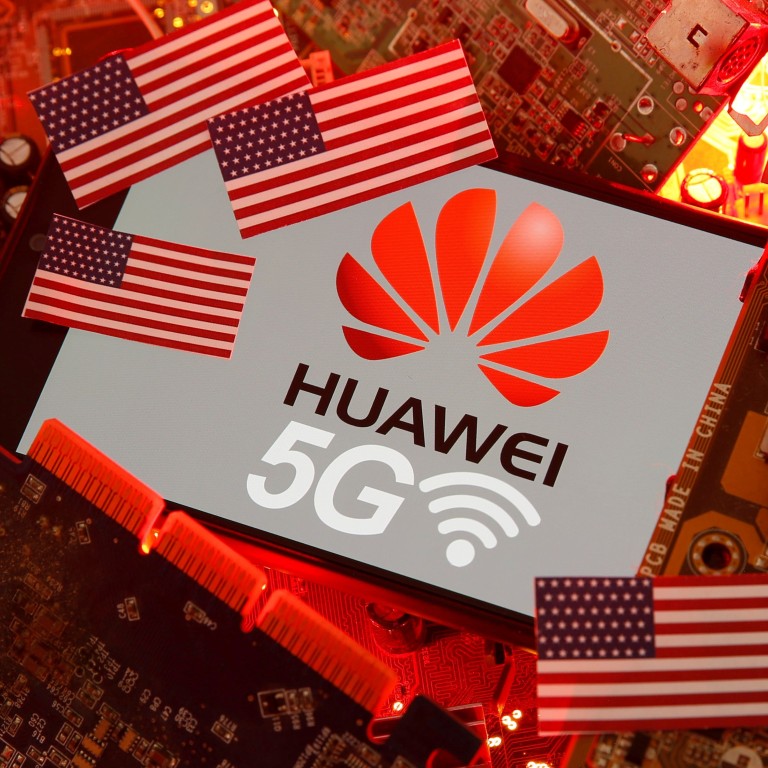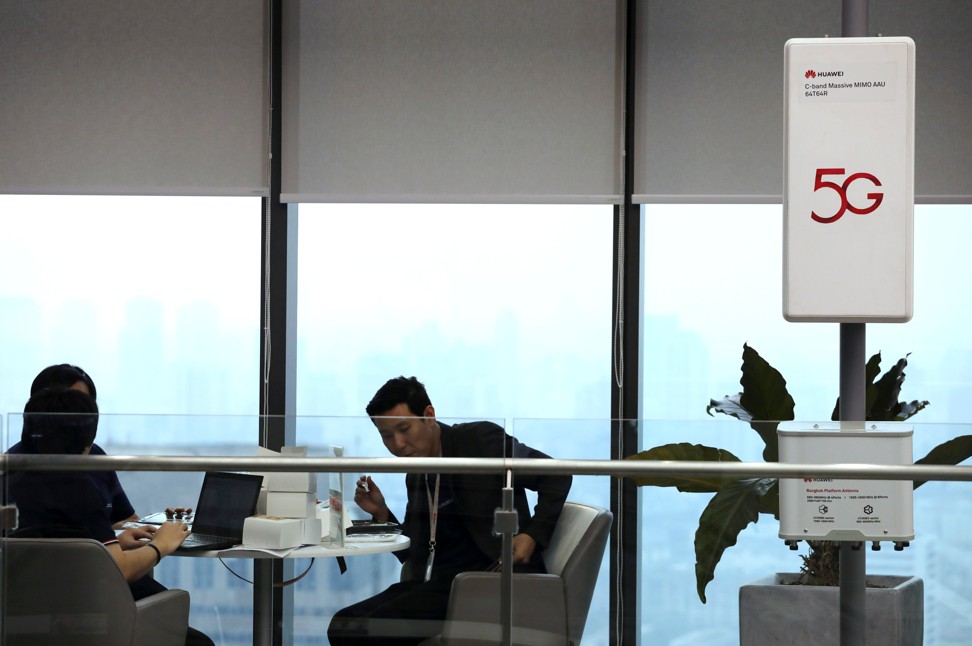
Huawei makes end-run around US trade ban by turning to its own chips
- The world’s biggest telecoms equipment supplier shipped about 600,000 5G mobile base stations as of early February
- More than 50,000 of those gear were manufactured without US hi-tech components
Huawei Technologies, the Chinese telecommunications equipment giant barred from doing business with US suppliers, is finding a way around the strict limits imposed by the Trump administration.
The US Commerce Department, citing national security concerns, has largely forbidden American companies from selling Huawei the computer chips it needs to make a piece of equipment integral to newly introduced 5G wireless networks. In response, China’s largest technology company ramped up its own capabilities to manufacture 5G base stations.
In a sign that the self-reliance is working, Huawei in the fourth quarter sold more than 50,000 of these next-generation mobile base stations that were free of US technology, according to Tim Danks, the US-based Huawei executive responsible for partner relations.
“It’s still our intention to return to using US technology,” he said. But the longer Huawei goes without access to US suppliers, the more unlikely it is to be able to return to using them, Danks added.

A base station is a piece of machinery that is used to connect mobile phones to fixed-line networks carrying internet traffic. Popular among telecoms providers, Mobile base stations from Huawei, which announced last month that it had 91 commercial 5G network equipment contracts, are widely considered among the most reliable for the price.
As of early February, Huawei had shipped about 600,000 5G base stations to mobile network operators racing to upgrade their infrastructure to 5G, which is designed to deliver data at faster speeds to a broad range of wirelessly connected devices – not just mobile phones. Most of these base stations were made using stockpiled chips bought before the US trade ban. While Huawei does not disclose its suppliers, base stations typically rely on a kind of processor called a field programmable gate array that is made by Intel Corp, a semiconductor colossus based in Santa Clara, California, and Xilinx, in neighbouring San Jose.
Those chips provide flexibility that makes it easier to update machines as new standards and features are added. Huawei’s chips are application-specific, meaning they are tailored to particular functions and it takes more time and money to replace them. That is a disadvantage at a time when new technology, such as 5G, is in its infancy and still subject to big changes.
Huawei defies the odds to lead global telecoms market after 180 days on US trade blacklist
The US initially clamped down on all shipments of American tech supplies to Huawei, which had spent more than US$10 billion a year on US products, but later began making some exceptions. Xilinx and fellow chip suppliers Micron Technology and Broadcom have all reported falling earnings on reduced or eliminated sales to Huawei.
Attempts by the US to persuade European and other allied countries to ban Huawei equipment have not succeeded, and chip makers in Asia and Europe continue to supply it.
For their part, American chip companies have argued that banning the supply of parts that Huawei can get elsewhere is counterproductive, saying that the lost revenue crimps research and development budgets and the ability to produce the best chips in the future.
Huawei’s HiSilicon chip unit designs semiconductors and has them made by Taiwan Semiconductor Manufacturing Co, the world’s largest chip foundry.
Shenzhen-based Huawei led the market for base stations with a 28 per cent share last year, according to New Street Research. It predicts demand for that equipment will rise this year with the 5G mobile network buildout. Nokia and Ericsson are Huawei’s two major competitors in this market.
Purchase the China AI Report 2020 brought to you by SCMP Research and enjoy a 20% discount (original price US$400). This 60-page all new intelligence report gives you first-hand insights and analysis into the latest industry developments and intelligence about China AI. Get exclusive access to our webinars for continuous learning, and interact with China AI executives in live Q&A. Offer valid until 31 March 2020.

